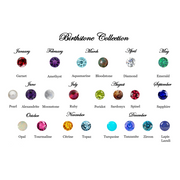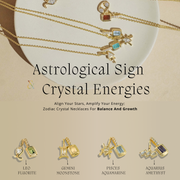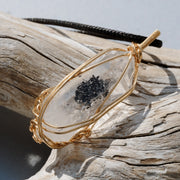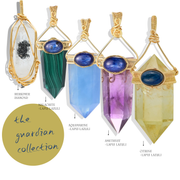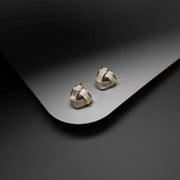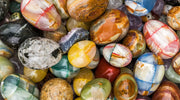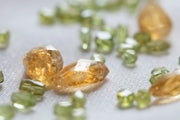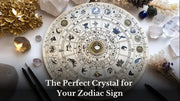Jade History
Ancient Origins
Jade, one of the most revered gemstones in human history, has been treasured for more than 7,000 years. Known for its smooth texture and soothing green hue, the stone holds deep cultural significance across Asia, Central America, and New Zealand. The word “Jade” comes from the Spanish piedra de ijada, meaning “loin stone,” because ancient cultures believed it could heal kidney ailments. In China, jade has been honored since Neolithic times as the “Stone of Heaven,” symbolizing purity, virtue, and spiritual balance.

Cultural Significance
In traditional Chinese culture, Jade is valued more highly than gold. Emperors wore jade amulets for protection, and it was carved into ceremonial objects, statues, and jewelry representing power and immortality. Confucius praised jade as a stone symbolizing wisdom, compassion, and justice. In Mesoamerican civilizations like the Maya and Aztecs, jade symbolized life, fertility, and divine authority. Maori tribes in New Zealand carved jade, known as pounamu, into tools and protective pendants passed down for generations.

Symbolic Uses Through History
Across civilizations, jade has symbolized harmony, protection, and prosperity. It is viewed as a stone that aligns the mind, body, and spirit—bringing balance, emotional healing, and good fortune. Centuries of tradition portray jade as a spiritual guardian, a talisman of strength, and a symbol of eternal beauty and wisdom.

Table of contents
Origin

China (Hetian/Hotan) – Famous for high-quality nephrite jade with creamy white, green, and mutton-fat colors prized for centuries.
Myanmar (Burma) – Produces the world’s finest jadeite, known for vivid imperial green and exceptional translucency.
Guatemala – Known for lavender, green, and black jade used since ancient Maya times.
New Zealand – Source of prized nephrite jade called pounamu, important to Maori culture.
Feature
-
Chemical Formula:
Nephrite: Ca₂(Mg,Fe)₅Si₈O₂₂(OH)₂
Jadeite: NaAlSi₂O₆
Jade is a name shared by two distinct minerals—nephrite and jadeite—each with unique characteristics.
-
Mohs Hardness:
Nephrite: 6 to 6.5
Jadeite: 6.5 to 7
Jade is tough and highly resistant to breaking, making it ideal for carving and everyday wear.
Color:
Jade occurs in shades of green, white, lavender, yellow, red, brown, and black. Jadeite produces the most vivid colors, including the highly valued imperial green. Nephrite tends to be creamy, soft, and more muted in tone. Color variations come from iron, chromium, and manganese impurities.Symbolism:
Jade symbolizes harmony, prosperity, protection, and purity. Spiritually, it represents wisdom, emotional balance, and the energy of renewal.-
Chakra:
Heart Chakra (Anahata): Encourages love, compassion, peace, and emotional healing.
Solar Plexus Chakra (Manipura): Supports confidence, abundance, and self-worth (especially with yellow or orange jade).
-
Zodiac:
Libra
Aries
Benefits
Emotional Harmony
Jade is known as a stone of serenity. Its gentle energy soothes the nervous system, calms emotional tension, and brings balance to the heart. It promotes emotional healing by encouraging forgiveness, understanding, and compassion toward oneself and others.
Protection and Good Fortune
Traditionally used as a protective talisman, Jade shields the user from negative energy and misfortune. It is believed to attract prosperity, abundance, and long-term success. Many cultures consider jade a lucky stone that brings harmony into relationships, finances, and overall life path.
Physical Healing and Vitality
In holistic healing, jade is associated with the kidneys, detoxification, and overall vitality. It is believed to balance bodily fluids, support the adrenal system, and enhance longevity. Historically, jade was used to relieve pain, improve circulation, and promote physical strength.
Spiritual Growth and Wisdom
Jade enhances spiritual insight by helping individuals stay grounded while accessing higher wisdom. It encourages clarity of thought, sound judgment, and an open heart. Its calm vibration supports meditation and deep inner reflection.
Confidence and Self-Worth
Yellow and orange varieties of jade support the Solar Plexus Chakra, boosting confidence, courage, and motivation. They help individuals believe in their abilities and pursue goals with positive energy.
Relationship Harmony
As a Heart Chakra stone, jade nurtures trust, love, and emotional balance in relationships. It encourages compassion, patience, and clear communication—strengthening bonds between romantic partners, friends, and family.
Type
Nephrite Jade
Tough, smooth, and often creamy in color, nephrite is the traditional jade used in ancient Chinese and Maori carvings. It symbolizes protection, grounding, and longevity.
Jadeite Jade
More rare and vibrant, jadeite displays rich greens, lavender, and other vivid colors. It represents prosperity, purity, and spiritual upliftment. Imperial jadeite is the most valuable jade in the world.
Lavender Jade
This soft purple variety brings emotional healing and spiritual calm. It supports intuition, peace, and gentle self-expression.
Yellow Jade
A warm, uplifting form of jade that inspires joy, confidence, and abundance. It is associated with the Solar Plexus Chakra.
Black Jade
Known for its protective qualities, black jade shields against negativity and strengthens resilience. It is frequently used as a grounding and empowering talisman.
White Jade (Mutton-Fat Jade)
Prized in Chinese culture for purity and elegance, white jade enhances clarity, calmness, and healing energy.
Care & Maintenance
Cleaning
Clean jade with warm water and a soft cloth. Avoid harsh chemicals, ultrasonic cleaners, and excessive heat that may damage polished surfaces or dye-treated stones.
Storage
Store jade separately in a soft pouch or lined jewelry box to prevent scratches. Keep it away from sharp objects and extreme temperature changes.
Handling
Jade is tough, but it can still scratch or lose luster with rough treatment. Avoid wearing jade jewelry during heavy physical activity. To recharge energetically, place it under moonlight or near a plant to restore its natural balance.
FAQs
Q: Is Jade a birthstone?
A: Jade is not a modern birthstone, but it is spiritually associated with harmony, healing, and prosperity for many zodiac signs.
Q: What is the rarest type of Jade?
A: Imperial green jadeite from Myanmar is the rarest and most valuable jade variety.
Q: Does Jade bring luck?
A: Yes, jade is widely believed to bring good fortune, protection, and positive energy.
Q: Can Jade be worn every day?
A: Absolutely. Jade is tough and durable, making it ideal for everyday wear.
Q: How do you know if Jade is real?
A: Real jade feels cool to the touch, is tough rather than brittle, and may show natural fibrous or granular texture under magnification.
Final Thoughts
Jade: Benefits, Properties and Meaning of the Stone shows why this ancient gemstone remains a timeless symbol of harmony, protection, and prosperity. From Chinese emperors to Mesoamerican kings, jade has been cherished as a guardian stone—balancing emotions, attracting good fortune, and supporting spiritual growth. Whether worn as jewelry, kept as a talisman, or used in meditation, jade brings peace, strength, and renewal. A stone of lasting beauty and wisdom, jade continues to guide hearts toward harmony, vitality, and abundance.

